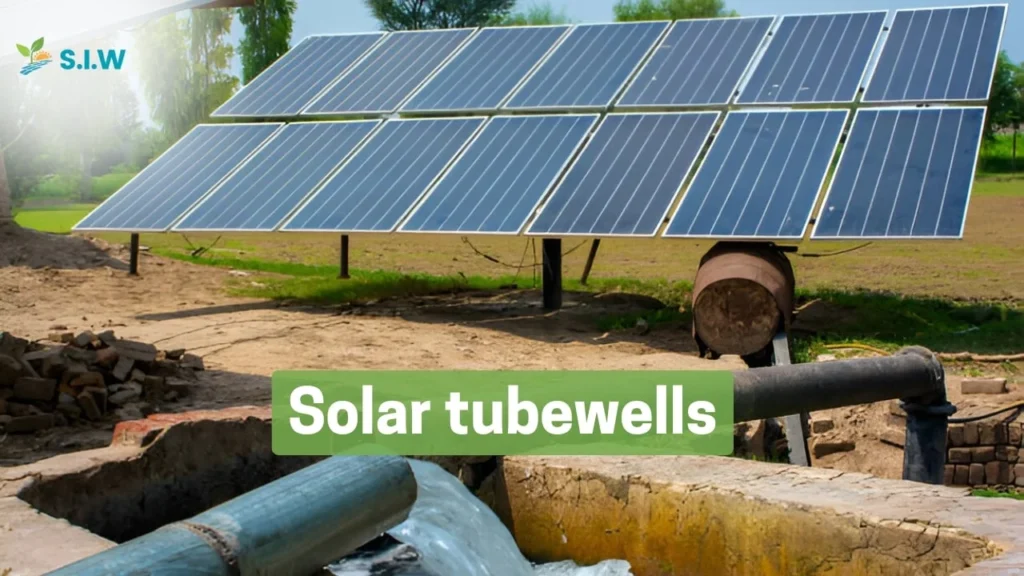Solar tubewells are an increasingly popular and eco-friendly solution for water pumping, particularly in rural and agricultural settings. These systems use solar energy to power the motor that draws groundwater to the surface, providing a sustainable and cost-effective solution for irrigation and water needs. The idea of using solar power for water pumping is not new, but with technological advancements, especially in solar panel efficiency, it has become more viable than ever.
How Solar Tubewells Work
Solar tubewells rely on photovoltaic (PV) panels to convert sunlight into electrical energy. This energy is then used to power a pump, which extracts water from the ground. The system typically consists of a solar panel array, a pump controller, and the water pump itself. The water is either pumped directly to the fields or stored in a reservoir for later use.
The capacity of a solar tubewell depends on the size of the solar panel system. For example, a 3kW Solar Panel System can support moderate water pumping needs, making it ideal for small to medium-sized farms. This system is designed to produce enough electricity during peak sunlight hours to run the pump efficiently.
Benefits of Solar Tubewells
One of the primary advantages of solar tubewells is that they provide an off-grid solution for areas with limited or no access to electricity. This makes them especially useful in remote regions where traditional electric-powered pumps are impractical or too expensive. Solar tubewells reduce the dependency on fossil fuels, cutting down operational costs and minimizing environmental impact.
Additionally, integrating solar tubewells with other sustainable systems, such as a Solar Pond Aerator, can further enhance the environmental benefits. A solar-powered pond aerator helps maintain water quality in ponds by increasing oxygen levels, which is essential for the health of aquatic life and the prevention of algae growth.
Challenges and Considerations
Despite the many benefits, there are certain challenges associated with solar tubewells. The initial investment can be high, especially for larger farms requiring more extensive systems. However, the long-term savings in electricity costs often outweigh the upfront costs. Solar tubewells also depend on consistent sunlight, which can be a limitation in areas with irregular solar radiation.
To mitigate this, many farmers opt to install a Solar Hot Water Heater alongside their solar tubewells. This system stores thermal energy, which can be used to heat water for other agricultural processes or household use, ensuring that solar energy is being utilized efficiently even during off-peak sunlight hours.
The Future of Solar Tubewells in Agriculture
As the cost of solar technology continues to decrease, we can expect solar tubewells to become even more prevalent. With innovations in Electric Hot Water Heaters and energy storage systems, farmers will have more control over how they use solar energy to power various aspects of their operations.
This sustainable approach to farming is gaining traction globally, particularly in regions where water scarcity is a significant issue. Countries like India and Pakistan are leading the way, with government subsidies making solar tubewells more accessible to small and medium-sized farmers.
Conclusion
In summary, solar tubewells offer a sustainable, cost-effective, and eco-friendly solution for water pumping in agriculture. When paired with other solar technologies like the Solar Pond Aerator and 3kW Solar Panel System, these systems provide farmers with an integrated approach to energy and water management. While initial costs and sunlight dependency remain challenges, advancements in solar technology continue to drive the adoption of solar tubewells across the world.
FAQs about Solar Tubewells
- What are solar tubewells, and how do they work? Solar tubewells are water pumping systems powered by solar energy. They use solar panels to generate electricity, which drives a motorized pump that extracts groundwater for irrigation or other uses.
- What is the cost of installing a solar tubewell? The cost of a solar tubewell can vary depending on the size of the system. Smaller setups may cost less, while larger farms with higher water needs might require more solar panels and a stronger pump, increasing costs.
- Can a solar tubewell work during cloudy weather? Solar tubewells are most efficient during sunny days. However, some systems are equipped with battery storage to store energy, allowing them to operate during overcast conditions or at night.
- How does a solar tubewell benefit farmers? Solar tubewells lower operational costs, reduce reliance on grid electricity or diesel fuel, and are environmentally friendly. They are especially beneficial in areas with limited electricity infrastructure.
- What maintenance is required for a solar tubewell? Solar tubewells generally require minimal maintenance. Cleaning the solar panels regularly to remove dust and ensuring that the pump is functioning properly are common maintenance tasks.








